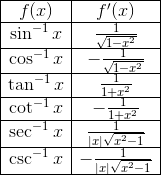Note: This article accounts for all revisions made to the AP Chinese Language and Culture Exam in Fall 2015. If researching test materials online, please only refer to those that appeared on the Spring 2016 Exam.
So you’ve been taking Chinese (Mandarin) for a while. Junior year is now wrapped up and you have three years of Chinese under your belt. It’s a language you want to continue learning. You dream of one day putting your language skills in a future study abroad or work opportunity. If that’s the case, AP Chinese Language and Culture is the class for you!

Chinese may be a difficult language to learn, but the AP Chinese Language and Culture Exam is as straight forward as AP Exams come. Over the next few paragraphs, I will break down the test and offer tips so that you can do your best on exam day! If you get to the end and still have questions, make sure to check out the official College Board website for AP Chinese Language and Culture!
How You’re Assessed on the Exam
Like with the SAT Chinese Subject Test, you do not have to be 100% fluent to make a 5 on the AP Chinese Language and Culture Exam. According to the College Board, the company that makes the exam, a student should have completed two or more years of Chinese before taking AP Chinese Language and Culture. Personally, I’d recommend three years, but in the end, it’s your call.
The exam covers a variety of knowledge and skills gained throughout the course. Summarized below are the ‘modes’ that you can expect to see covered on exam day.
- Interpersonal Mode: Two-way Communication
- Interpretive Mode: Understanding Written or Spoken Communications
- Presentational Mode: Creating Written or Spoken Communication
Each of these modes cover between 5-7 broad learning objectives. Throughout the year, expect each activity and assessment to touch on all three modes.
One last thing to mention is that unlike the AP Japanese Language and Culture Exam, AP Chinese Language and Culture does not require students to memorize a certain list of characters. Still, it is highly recommended that before taking the exam, students are comfortable using approximately 2,500 Chinese characters (traditional or simplified).
Successful Time Management
The AP Chinese Language and Culture Exam is a two-hour and 15-minute exam, making it one of the shorter AP Exams out there. Even so, every second counts. Let’s see what this exam is all about.
BIG NOTE: The AP Chinese Language and Culture Exam is administered on computer.
Section I: Multiple Choice (65-75 Questions, 80 Minutes, 50% of Exam Score)
Section I is further broken down into two sections: Part A and Part B.
- Part A (Listening): 25-35 Questions, 20 Minutes
- Rejoinders: 10 Minutes
- Listening Selections: 10 minutes
- Part B (Reading): 35-40 Questions, 60 Minutes
- Varied Reading Selections
- Story
- Brochure
- Etc.
- Varied Reading Selections
In Part A, the computer gives you a set number of seconds to answer each question. We’ll discuss why in the Test Content Section. For Part B, there is no special time restriction. This means you have roughly one minute and twenty seconds to answer each question. In short, that means every four minutes you should have answered three questions.
Another thing to remember is that like all AP Exams, on AP Chinese Language and Culture there is no penalty for guessing. That’s right; no points are deducted for incorrect answers. Why is that a good thing for you? Well, if there is a question or two where you get stuck, there is no shame in guessing and moving on. Just don’t leave any questions blank!
Break (10 Minutes)
Break is an important time during any AP Exam. Even though the AP Chinese Language and Culture Exam is shorter than AP Exam, you still need to freshen up. Go to the bathroom, drink some water, and eat something.
Section II: Free Response (9 Questions, 41 Minutes, 50% of Exam Score)
Section II is further broken down into two sections: Part A and Part B.
- Part A (Writing): 2 Questions, 30 Minutes
- Story Narration Question: 15 minutes
- Email Response Question: 15 minutes
- Part B (Speaking): 7 Questions, 11 Minutes
- Conversation: 4 minutes (20 seconds allotted to respond to each question)
- Cultural Presentation: 7 minutes (4 minutes allotted to prepare speech, 2 minutes to speak)
In Section II it pays to have participated in class activities. Not only will your language skills be stronger, you are less likely to choke if the Exam throws you a curveball.
Test Content: Section I (Listening and Reading)
Even though the exam in its current form is just over a year old, many multiple choice questions from previous years’ AP Chinese Language and Culture Exams are still a valid way to practice for test day. If your teacher knows what he or she is doing, you will see old (but still relevant) exam questions on just about every one of your tests throughout the year.
As you listen to stimuli in Section I, Part A, the exam assesses your ability to comprehend, interpret, and infer information. All recordings are repeated once for your benefit. These recordings are things that Chinese speakers would come across in their day to day lives. For example, you may encounter a radio broadcast or conversation between two people. All questions are written in English. If you do not answer within a set number of seconds (yes, there is a countdown clock) the computer moves onto the next question. Why is there a time limit? Well, becoming fluent in any language requires you to respond to stimuli in real time.
Section I, Part B is the reading section. Expect to read emails, short stories, letters, and other common texts. The text stays on the screen as you answer questions. Some of the texts provide translations for uncommon words that appear in the text. Make sure to see if each text has them before you begin to read.
One last thing about time management: If you’re comfortable with time management on other standardized tests, you should have little to no trouble with Section I of the AP Chinese Language and Culture Exam.
Test Content: Section II (Conversation and Cultural Perspective Presentation)
In Part A, you simulate a text chat with a fluent Chinese speaker. Every time your ‘chat partner’ poses a question, you have 90 seconds to type your reply. Once you have submitted an answer, you cannot go back. As you can expect, your answers are assessed on grammar, usage, and how you answer the question.
Your second task in Part A is to write a brief compare and contact article. The prompt is given to you in English, and you are expected to write 200 to 400 characters. Like with any essay, plan your reply before starting to type.
The first task in Part B is a simulated conversation. You are given the topic of the conversation in English. The recording will go first, and you will have 20 seconds to form and give a reply.
The second task in Part B is a brief oral presentation on some aspect of Chinese culture. After the computer gives you the topic, you have four minutes to plan your presentation before your two-minute speech. Remember, following the directions is just as important as wowing your listens with your Chinese fluency.
Pro-Tip: Besides studying Chinese, a great way to practice for Section II is to install Chinese language support on your personal computer. On the AP Exam, you will have the choice to type in Pinyin IME or Phonetic IME, so make sure you are practicing with one of these two input methods.
The End
The AP Chinese Language and Culture Exam is a course almost exclusively taken by 12th grade students. After the exam is over, you have graduation and college to look forward to. Yet as May turns to June, high school and college teachers across the country sit down to grade your exam, meaning that The College Board will release AP Chinese Language and Culture scores in early July.
Yep, one day in the middle of summer you’ll get an email saying that your scores are ready on your College Board account. For those of you that earn a 4 or 5, congratulations for earning yourself some college credit! Come freshman year, you can jump right into a second-year Chinese language course.

If you earned a 3 or less, don’t fret. After all, Chinese is one of the HARDEST LANGUAGES to learn if you didn’t grow up speaking it. Besides, many colleges offer language placement tests for matriculating students. You might have another shot to get into a higher level Chinese course.
Even if come freshmen year you find yourself in Chinese 101, it is still an amazing opportunity to refresh old material. If Chinese is truly your passion, use this opportunity to double down and fill in any gaps in your knowledge.
Best of luck in your Chinese endeavors, Magooshers. Till next time.





Leave a Reply